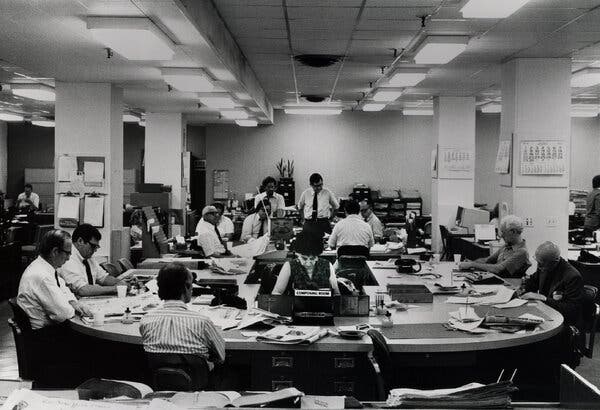Climate change and the media

Even in the 19th century, some scientists were foreseeing that adding carbon dioxide to the atmosphere via human activity could cause the planet to warm rapidly. The French polymath Fourier first described the greenhouse effect — the fact that the atmosphere traps the Sun’s radiation and causes the Earth to be much warmer than it would otherwise be — in 1827, though he himself did not use that term. In the 1890s the Swedish and American scientists Svante Arrhenius and PC Chamberlain independently theorized that the burning of fossil fuels could produce enough carbon dioxide to significantly enhance the greenhouse effect, although they could have hardly imagined at the time how rapidly that process would end up taking place.
Average surface air temperatures did rise by about .25 of a degree C. between 1890 and 1940, and during this half century interest in the possibility of human-caused global warming slowly grew in the scientific community. Then, in what may turn out to be a catastrophe of world-historical proportions, various random factors caused the next three decades to be somewhat cooler — with average surface temperatures declining by .2 C. Although the basic theory behind human-caused warming remained as a solid as ever, this empirical happenstance understandably led to a widespread loss of interest in the possibility of global warming, since it clearly wasn’t happening at the present moment. (Indeed some climatologists were predicting a new ice age).
The result was that, during my childhood in the 1960s and the 1970s, the whole concept of global warming was some weird bit of speculation among a few scientists, that got lost amid the many apocalyptic environmental prophecies that characterized those years. This remained the case into the mid-1980s, despite renewed interest among scientists in the concept, driven by the realization that global atmospheric concentrations of carbon dioxide — which first started getting measured 30 years earlier — were indeed rising rather rapidly. Here’s a news story from 1983, in which even Ronald Reagan’s EPA was uttering some prophetic warnings to Congress and the public:
Keyes said in an interview planning for the global warming ”should be on the research agenda now” because the projected increase in temperatures is ”geometric, tremendously fast.”
The report, finished last month, said current estimates suggest a 3.6-degree Fahrenheit rise could occur by 2040 and a 9-degree rise by 2100.
Previous global temperature changes ”have occurred over tens of thousands of years,” the report noted. But the projected warming induced by increases in carbon dioxide ”could equal historical changes in climate in a matter of only 120 years.”
”As a result, agricultural conditions will be significantly altered, environmental and economic systems potentially disrupted, and political institutions stressed,” it predicted.
John Hoffman, head of strategic studies for the EPA, told the New York Times, ”Major changes will be here by the years 1990 to 2000, and we have to learn how to live with them.”
”New York City could have a climate like Daytona Beach, Fla., by 2100,” he added.
The greenhouse or warming effect comes from increasing concentrations of carbon dioxide in the atmosphere. It lets the sunlight that heats Earth enter the atmosphere but inhibits the escape of heat radiation into space. The carbon dioxide comes mainly from the burning of fossil fuels.
The report strongly recommends that planning begin now to deal with the changes global warming will produce.
Here are the total number of annual stories in the English-language news media, as curated by Nexis, that contained the phrase “global warming:”
1970-1979: 3
1980: 3
1981: 15
1982: 12
1983: 25
1984: 20
1985: 19
So, basically, this just wasn’t a story. When it did get mentioned, the response among politicians and the literate public tended to be something like “weren’t they predicting an ice age ten years ago?”
Then something happened, and it happened real fast:
1986: 67
1987: 110
1988: 924
1989: 3,994
1990: 6,472
I don’t know if anyone has really drilled down yet into all the factors that caused climate change to go from a non-story to one of the biggest stories in the world practically overnight, but here’s a really obvious one: the 1980s were extremely hot years, comparatively speaking (though they were extremely cool, compared to the present!).
The five hottest years between 1880 and 1990 were 1981, 1983, 1987, 1988, and 1990, with the last two being the hottest of all. It would be an oversimplification to say that climate change went from some freak egghead theory to A Big Story because a bunch of assignment editors at our leading newspapers, magazines, and television studios had a few more uncomfortably hot days on their way to the office than they were accustomed to experiencing. But it would also be kind of true, probably.
. . . several commenters have noted that James Hansen’s testimony before Congress on June 24, 1988 was a critical event in regard to media coverage of global warming. I checked, and the day before the temperature hit 101 degrees in Washington DC — 16 degrees above average. (In fact the city was in the midst of a heat wave for the entire week). If it had been 78, as it so easily could have been, I doubt his testimony would have gotten anything like the same attention. . . Further inquiry reveals this was no coincidence: Hansen coordinated his appearance, which was set up by Colorado Sen. Tim Wirth, to coincide with the peak of the city’s heat wave.


